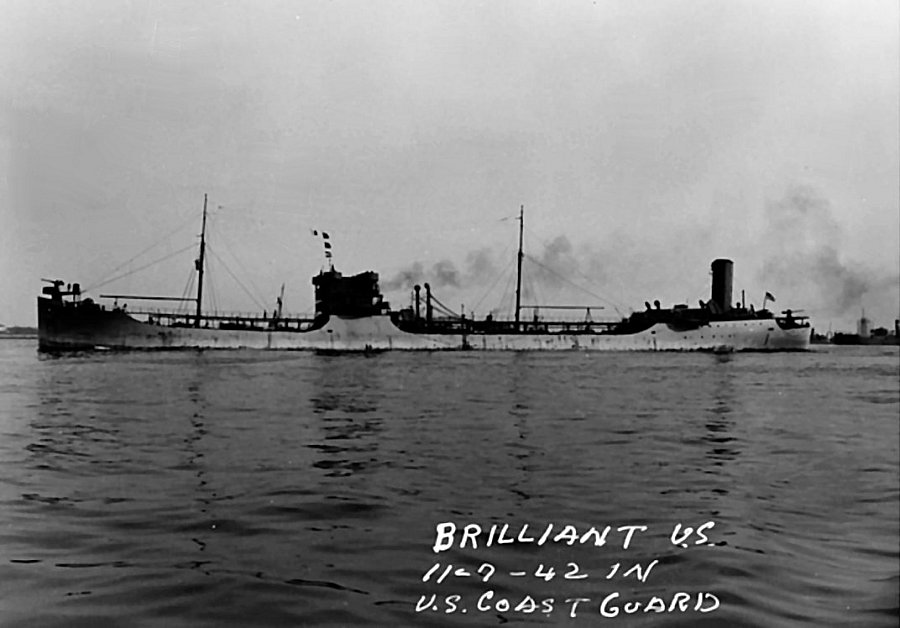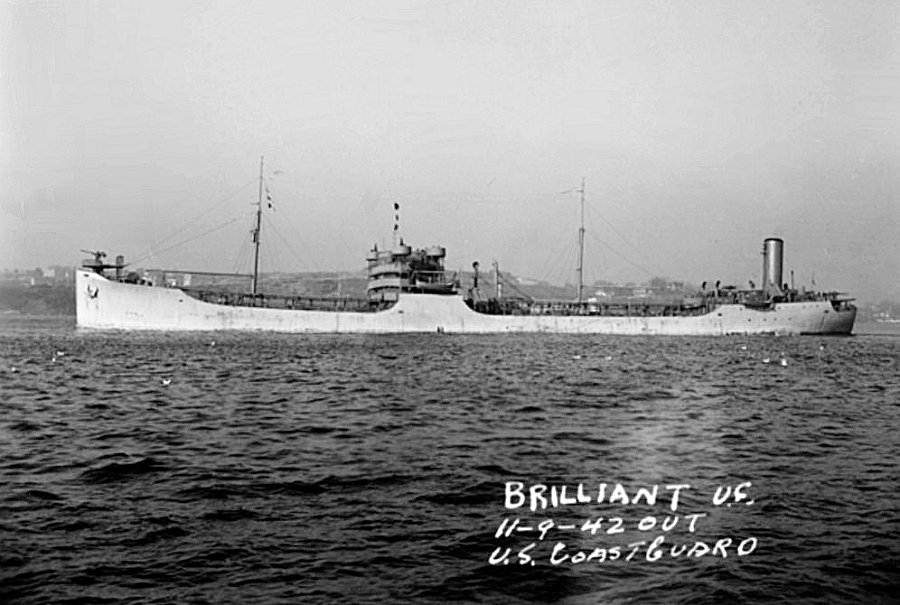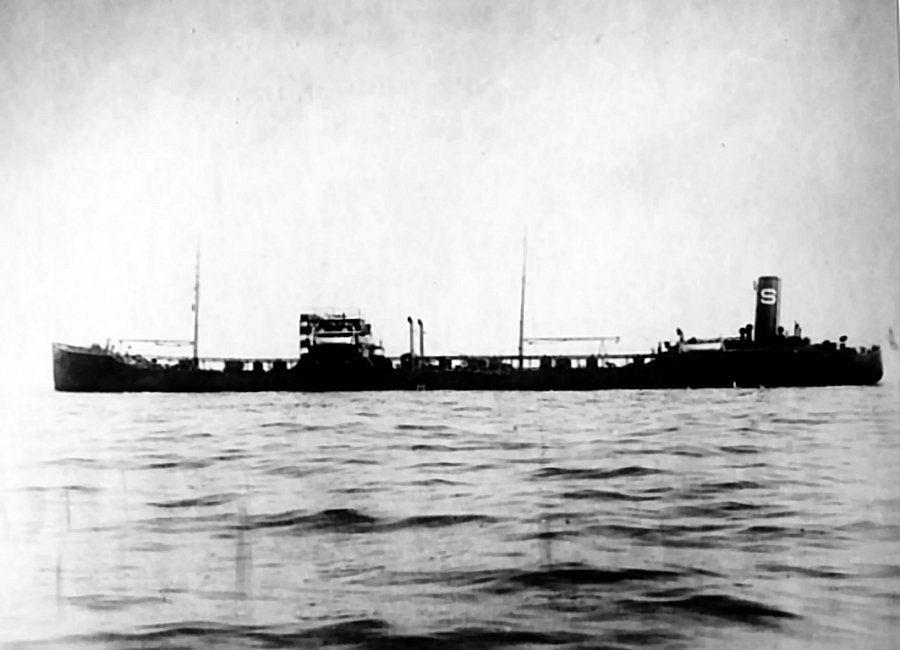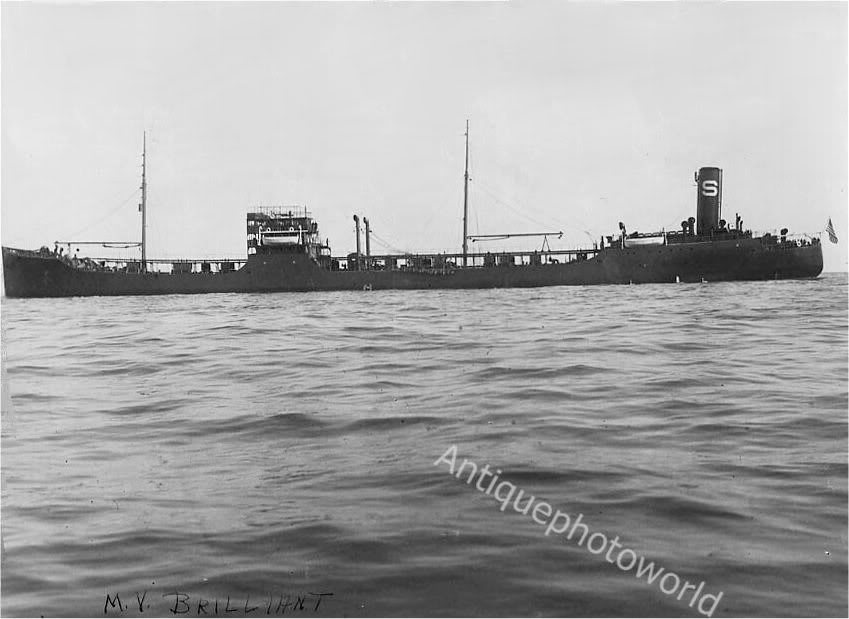Auke Visser's International Esso Tankers site | home
Brilliant (2) - (1930-1931)

"Brilliant", inbound, was build in 1930. Torpedoed and sunk in 1942, June 11th, 1942.
( Photo US Coast Guard )

"Brilliant", outbound, September 11th, 1942.
( Photo US Coast Guard )

"Brilliant" in 1930.

"Brilliant".
The Miramar Ship Index for
|
BRILLIANT
|
IDNo / IMO
|
2230338
|
Year
|
1930
|
Name
|
BRILLIANT
|
Flag
|
USA
|
Owner
|
Standard Tptn., Co., Inc.
|
Type
|
Tanker
|
Tons
|
9132
|
DWT
|
14533
|
LOA
|
152.43
|
LPP
|
146.30
|
Beam
|
20.04
|
Dept
|
11.28
|
Draft
|
??
|
Machinery
|
1D-11
|
Power
|
3300 IHP
|
ShipDesign
|
Tanker
|
Builder
|
Sun
|
Yard
|
Chester, Pa
|
Yard No
|
127
|
Country built
|
USA
|
Keel
|
28.04.1930
|
Launch
|
05.11.1930
|
Completed
|
15.11.1930
|
Subsequent History
|
1931 BRILLIANT - Standard-Vacuum Tptn., Co.
1931 BRILLIANT - Socony-Vacuum Oil Co., Inc.
|
End
|
1943
|
Disposal Data
|
Torpedoed by U 43, 18 Nov 1942, in 50.45 N-45.53 W, voyage New York - Belfast, fuel oil. Broke in two under tow 45.00 N / 55.00 W on 20.01.1943 [ voyage St.John's Nfl.-Halifax, for repairs ]
|
Brilliant
LOA 500' 1", Beam 65' 9", Depth 37', 14,533 DWT, 115,984 bbls, Sun Doxford diesel 4-cylinder 2-cycle opposed piston 3300 IHP.
Launched 5 November 1930 and commissioned 10 days later at the Sun Shipbuilding & Dry Dock Company, Chester, Pennsylvania.
BRILLIANT was the first of four ships to be built to the hull measurements shown above. The other three were COMET, DAYLIGHT and the British-flag ECLIPSE. COMET differed from the type in that she was powered by steam, to provide the comparisons and the control in Socony-Vacuums experiment with diesels.
BRILLIANT first shook herself down along the US east coast, then proved herself by a few coast-to-coast runs, and ?nally essayed the longest voyage of all - to Australia and back.
The experiences of this ship during WWII constitute an epic of the sea. In November 1942, having survived the initial U-boat onslaught on the US eastern seaboard, BRILLIANT found herself in a transatlantic convoy bound for the UK. On 18 November the convoy was attacked by submarines and BRILLIANT was hit. She caught fire and was abandoned in justifiable haste by most of the deck officers at whose trouser legs the flames were licking. The junior third officer, James C. Cameron, inspired by the calmness of a young Armed Guard officer, switched his efforts from getting off the ship to putting out the fire. He succeeded, and under his inexperienced command BRILLIANT made safe harbour at St Johnís, Newfoundland.
There she was temporarily repaired, provided with a new set of deck officers, and, when the weather looked right, headed for Halifax for full repairs. On her way along the coast BRILLIANT met gale force winds and rough seas, at the height of which, on 20 January 1943, the damaged BRILLIANT broke in half. The stern half of the ship remained afloat for several days, and all the men on it were eventually rescued. The forward half, however, sank almost immediately and all the men amidships were lost. James
Cameron, who had been promoted to third officer, was one of them.
|